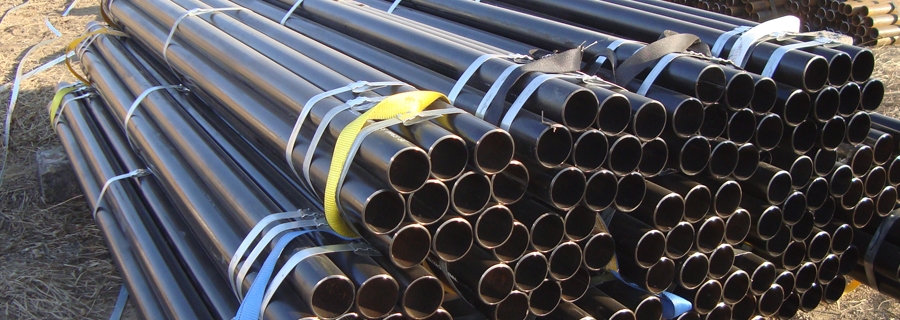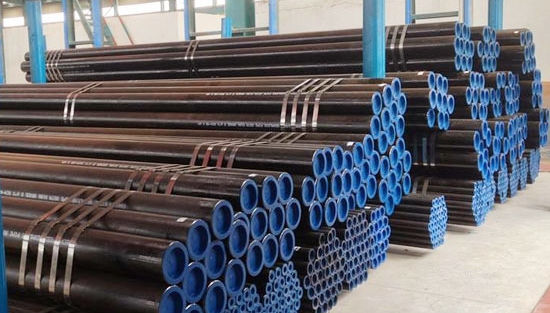Strength in Every Joint: Exploring A333 Grade 6 Pipe
The A333 Grade 6 pipe, renowned for its low-temperature service suitability and remarkable toughness, is a critical component in various industrial applications. Understanding its properties ensures optimal usage in challenging environments. Cangzhou Shenlong Pipe, a leading supplier in the field, offers a comprehensive range of high-quality products including seamless pipes, welded pipes, and various pipe fittings. Our products, celebrated globally, are manufactured in an advanced facility equipped with automated machinery for anti-corrosion coating processes. With an impressive annual production capacity of approximately 150,000 tons, Cangzhou Shenlong ensures reliability and innovation in every product, meeting diverse customer needs across the world.
Understanding A333 Grade 6 Pipe
Composition and Material Properties
The A333 Grade 6 pipe is crafted from carbon steel, primarily designed for low-temperature services. It typically contains elements such as carbon, manganese, phosphorus, sulfur, and silicon. This specific blend ensures excellent toughness and durability, even under harsh environmental conditions.
Manufacturing Process
The manufacturing of A333 Grade 6 pipes involves seamless or welded processes, with seamless pipes being made from a solid billet followed by hot rolling or cold drawing. Welded pipes are made by shaping steel into a cylindrical form and then welding the edges together. Each method is carefully controlled to ensure structural integrity and compliance with industry standards.
Applications in Various Industries
A333 Grade 6 pipes are extensively used in industries requiring high strength and resistance to impact at low temperatures. These include petrochemical, oil and gas, and construction industries. They are particularly essential in applications such as pipelines, storage tanks, and low-temperature or cryogenic pressure vessels.
Mechanical Properties
Tensile Strength
A333 Grade 6 pipes are known for their strong resistance to elongation under force, typically showcasing a minimum tensile strength of 60,000 psi. This property makes them suitable for heavy-duty applications where mechanical stress is prevalent.
Yield Strength
The yield strength of A333 Grade 6 pipe is about 35,000 psi. This measurement indicates the maximum stress that can be applied before the pipe starts to deform permanently, making it an ideal choice for high-pressure environments.
Impact Toughness
These pipes excel in low-temperature environments due to their excellent impact toughness. This means they can withstand sudden impacts or force without cracking, crucial for maintaining integrity under variable loads.
Hardness
The hardness of A333 Grade 6 pipes provides a good balance between strength and ductility, allowing for effective machining without compromising durability.
Fatigue Resistance
The fatigue resistance of A333 Grade 6 pipes ensures longevity and reliability in cyclic loading conditions, reducing the likelihood of failures in continuous operation settings.
Corrosion Resistance
Factors Affecting Corrosion
Several factors influence the corrosion of A333 Grade 6 pipes, including environmental conditions, temperature, and the presence of corrosive chemicals. The material's inherent properties often dictate its resistance to these factors.
Corrosion Resistance of A333 Grade 6 Pipe
A333 Grade 6 is manufactured to resist oxidization and deterioration in low-temperature environments. While not immune to all forms of corrosion, its composition provides a baseline protection suitable for many industrial applications.
Measures for Corrosion Prevention
To enhance the corrosion resistance of A333 Grade 6 pipes, preventive measures such as proper coating, use of inhibitors, and regular maintenance are recommended. Ensuring the pipe is suitable for the specific chemical environment it will be exposed to can also significantly prevent corrosion-related issues.
Weldability and Fabrication
Welding Processes
A333 Grade 6 pipe is compatible with various welding techniques, including MIG (Metal Inert Gas), TIG (Tungsten Inert Gas), and SMAW (Shielded Metal Arc Welding). These processes allow for strong and durable joints, essential for maintaining the integrity of pipelines and other structures in low-temperature environments.
Challenges in Welding A333 Grade 6 Pipe
Welding A333 Grade 6 can be challenging due to its strict temperature control requirements. Preheating and post-weld heat treatment are often necessary to avoid cracking. The alloy's susceptibility to cold cracking requires careful attention to the welding procedure and ambient temperature.
Best Practices for Fabrication
Best practices in fabricating A333 Grade 6 pipe include maintaining clean work surfaces, using low-hydrogen consumables, and ensuring a controlled cooling rate. Adhering to prescribed welding parameters and regular inspections during the welding process are crucial for achieving high-quality welds.
Applications
Oil and Gas Industry
In the oil and gas sector, A333 Grade 6 pipe is extensively used in flow lines, gathering lines, and transmission pipelines, especially in cold regions where low-temperature performance is crucial.
Petrochemical Industry
The petrochemical industry utilizes A333 Grade 6 pipe for process piping and heat exchangers, where robust performance and resistance to low-temperature environments are necessary.
Power Generation
For power generation, A333 Grade 6 is used in applications involving coolants and other low-temperature fluids, contributing to the safe operation of power plants.
Water Infrastructure
This pipe grade is also vital in water infrastructure, particularly in cold climates, for water transport and as structural components in facilities.
Construction
In construction, A333 Grade 6 pipe serves as structural components for buildings and bridges in cold regions, ensuring durability and resistance against environmental stresses.
Case Studies
Successful Applications of A333 Grade 6 Pipe
One notable success story involves a gas transmission project in Alaska, where A333 Grade 6 pipes were used due to their excellent low-temperature performance and robust mechanical properties.
Challenges Faced and Solutions Implemented
In a large-scale oil refinery project, initial weld failures occurred. The project team implemented a stringent welding protocol that included preheating the pipes to 250°F and using low-hydrogen consumables, successfully mitigating the problem.
Lessons Learned
The projects highlighted the importance of rigorous testing and adherence to welding procedures specific to A333 Grade 6 to prevent failures and ensure long-term reliability.
Future Prospects
Research and Development Trends
Ongoing research focuses on enhancing the toughness and weldability of low-temperature steels. Innovations in chemical composition and heat treatment processes promise to further improve the performance of A333 Grade 6 pipes.
Potential Improvements in Material Properties
Future developments may include refining the grain structure to improve mechanical properties, such as increased toughness and reduced susceptibility to cracking at low temperatures.
Emerging Applications
As the demand for sustainable and versatile materials grows, potential new applications for A333 Grade 6 include geothermal and hydrogen transport, where its properties could play a crucial role in emerging energy infrastructures.
In Closing
The A333 Grade 6 pipe exemplifies strength and resilience, making it an indispensable asset across multiple industries. With its robust mechanical properties, excellent low-temperature performance, and adaptability to various welding techniques, it ensures operational reliability and durability. As industries continue to evolve, the ongoing developments in its fabrication and application promise to enhance its capabilities even further. The A333 Grade 6 pipe remains a cornerstone in constructing infrastructure that stands the test of time and temperature, truly embodying strength in every joint.






